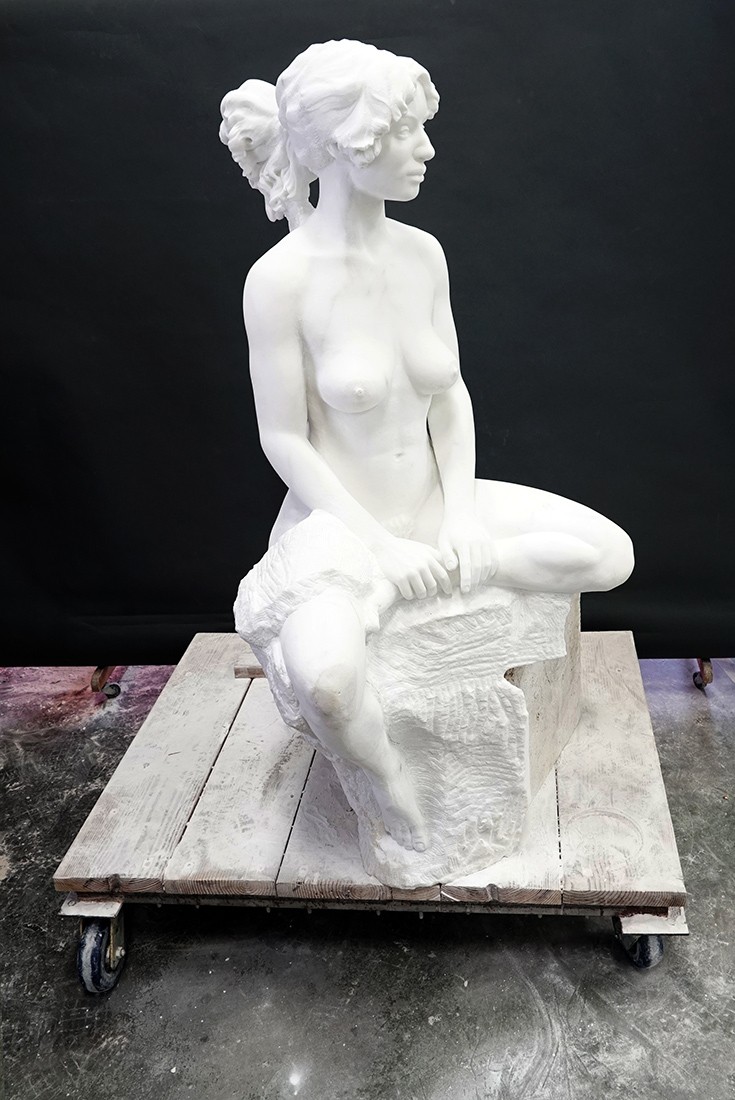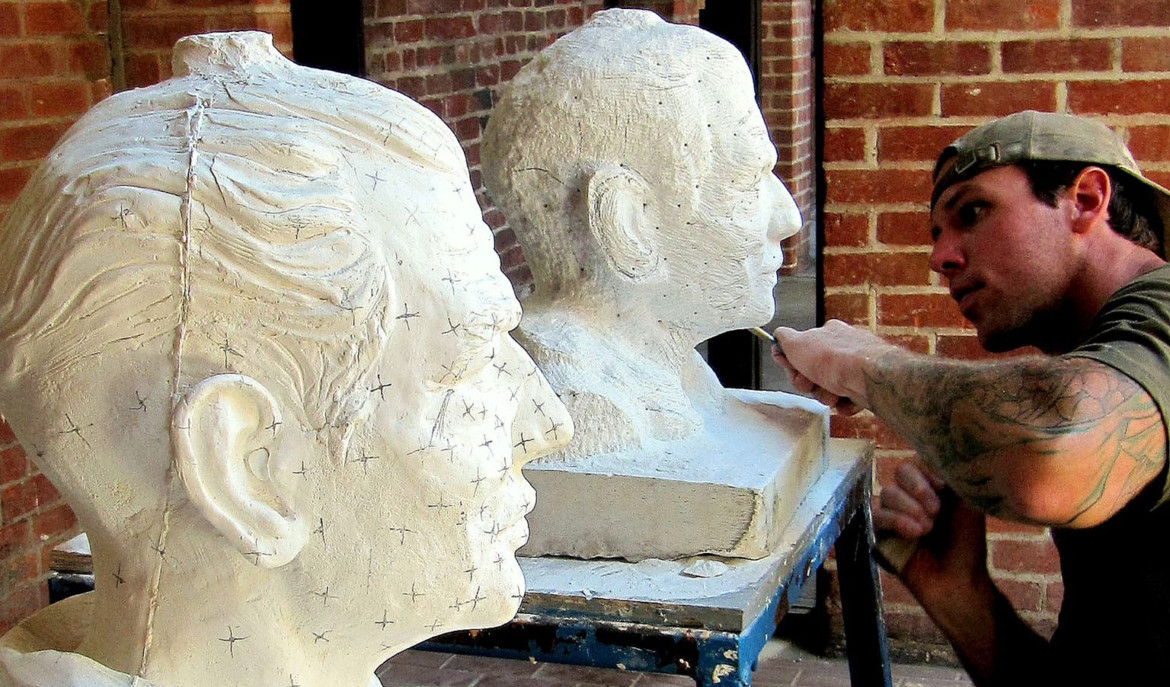Stephen Bouska’s time as a School of Fine Art—Sculpture student allowed him to add creative, figurative, and business skills to his craft training
By Nina Tabios
To Stephen Bouska, the only thing that separated him from being a craftsman and an artist was a university education. He was already a practicing stonemason for 10 years when he began to pursue a higher education. Enrolling in the Academy of Art University’s School of Fine Art—Sculpture (FASCU) program in 2013, Bouska arrived already knowing the ‘how’ in carving, he just needed to find the ‘what.’
“There’s a recipe for success: craft training alongside university training [and] you want both,” the 2016 B.F.A. FASCU alumnus explained. “The voice, what you want to speak, is the university training. The Academy had the best package, the practical training with the finest instructors made a robust curriculum.”
Born into a family of carvers, in the decade prior to his Academy training, Bouska had learned and worked from several master carvers and cutters within the Sacramento Valley and across California. Bouska’s hands have touched architectural and ornamentation stone carving, statue restorations from cathedrals to courthouses, including parliament houses in Australia during his journeyman status.
He remembers his first day at the university, already armed with a sizeable amount of the knowledge taught in his foundational courses. Bouska said his focus was learning the figurative part of the training, specifically anatomy, knowing he wanted to get into sculpting marble. But by the time he was ready to walk the stage, Bouska had incorporated a creative and business acumen into his stone masonry.

“Tullee” by Stephen Bouska. Photo courtesy of Stephen Bouska.
“There were many benefits of the networking, being advantageous in meeting other artists, working with the instructors and just becoming a part of that community,” he said. “You can be the best painter, best designer, best anything, but if people don’t know who you are, people aren’t going to ask you anything.”
Refined and expressive, the contemporary art developed during Bouska’s time at the FASCU program caught wide attention. His 2016 Spring Show Best in Show award-winning sculpture, “Tullee,” a woman carved out of 2,000 pounds of marble, caught the eye of Robin Salmon, the vice president for the Brookgreen Gardens in South Carolina, the home of the largest selection of narrative figurative work in the United States.
“[‘Tullee’] is there in a safe home, she’s sitting in an interior setting surrounded by different classical artists—some pieces are 150 years old,” Bouska commented.
FASCU Director Thomas Durham remembered Bouska’s proficiency in carving, but there was no doubt he needed help in refining his work. Being the only one on staff with stone carving experience, Durham acted as Bouska’s sounding board, helping him develop an aesthetic and his eye for abstraction. According to Durham, Bouska kept improving because he kept challenging himself.
“Most people—even artists—will stop if they don’t get it in the first two or three tries. [Stephen] doesn’t stop at that point,” Durham said. “He’ll try something different. He’s not afraid of failure. He’s committed to the point where he doesn’t fear failure. That’s essential to grow as an artist.”
Bouska has been able to work his university training into his clientele work as well. Sometimes his clients know what they want, sometimes they don’t and it’s up to him to walk them through the process of creating functional, beautiful art. His company, Old World Stone Design, is never without work-in-progress commissions. Currently, they are working on a carved granite fountain, a marble urn with a bronze plate and a bronze monument to be erected in Sacramento. Even with the company’s busy schedule, Bouska still manages to find time for personal projects. He’s currently working on a new marble portrait piece he calls “Alexis” and hopes to continue experimenting in his art.
“[The Academy] was an environment that was nurturing, but also in a place that gave you the chance to experiment and try things that may work or may not work,” he said. “Being able to understand the results of that has made me a better artist.”
